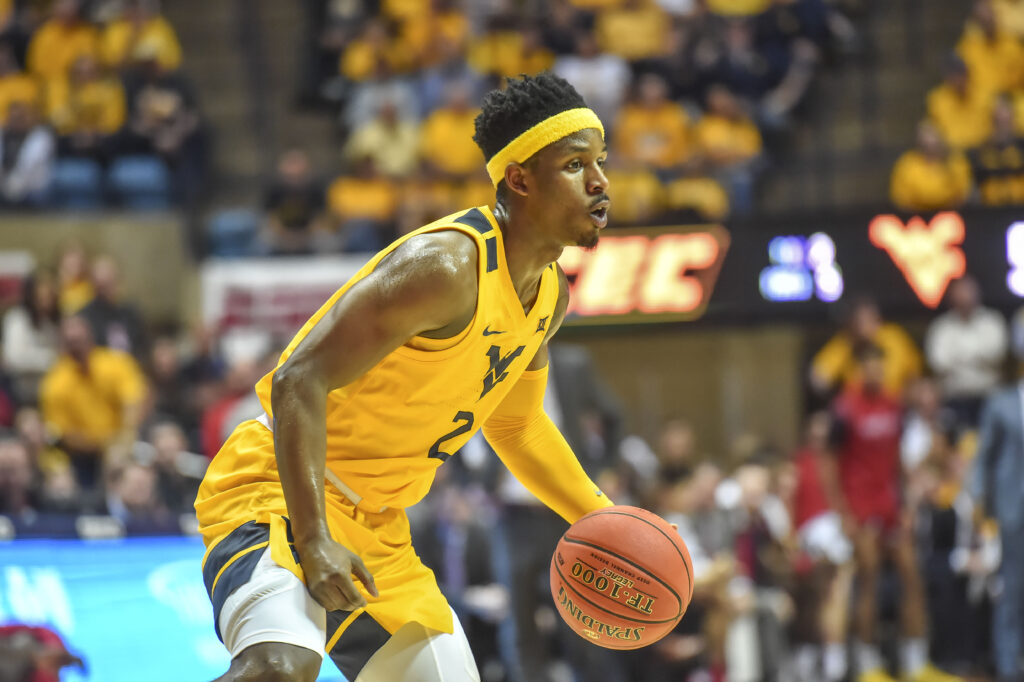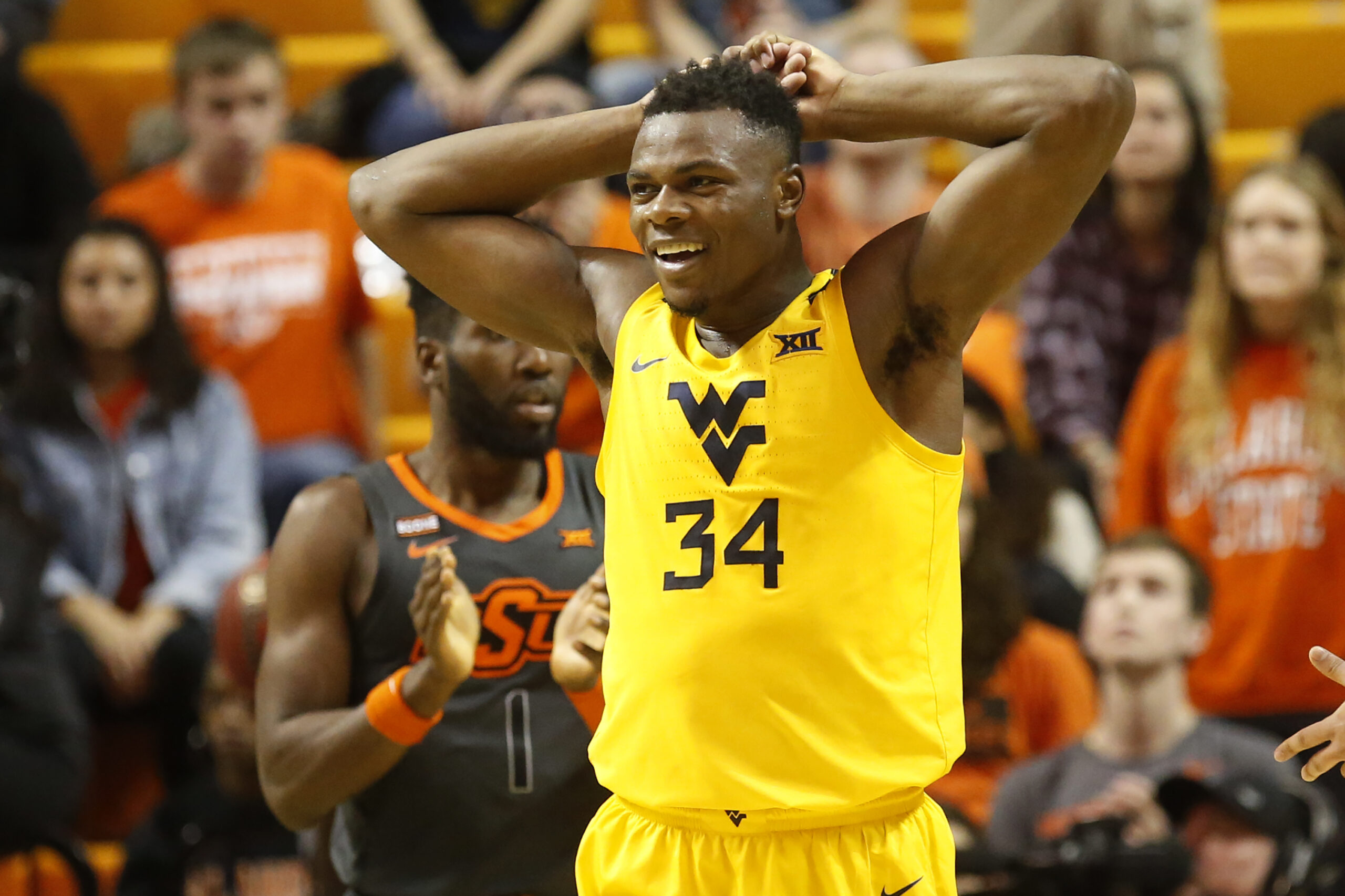MORGANTOWN, W. Va. — At some point the games will begin again. The WVU Coliseum will be open for business and according to a tweet from WVU men’s basketball coach Bob Huggins the 2020-21 Mountaineers have some “unfinished business” to attend to.
When the immediate sports world shut down last Thursday because of the coronavirus, it brought an end to a WVU basketball season that was in the process of putting the finishing touches of a turnaround.
One season after finishing last in the Big 12 and then giving up 109 points in a CBI loss against Coastal Carolina, the Mountaineers put up 21 wins and were destined for an at-large spot in the NCAA tournament.
What exactly lies ahead for the Mountaineers?
That is a question with several possibilities, beginning with whatever decisions the NCAA makes on eligibility for the 2020 seniors who never got the opportunity to complete their college careers.
The NCAA’s Council Coordination Committee has granted relief for seniors in spring sports that had their seasons eliminated to be eligible to return and play next season, as long as they stay enrolled at their school.
There is discussion that the committee might also do the same for winter-sport seniors, but no official decisions have been announced.
As we begin to look ahead, our top five questions for the 2020-21 season begins with how might the Mountaineers’ roster look if seniors Logan Routt, Jermaine Haley and Chase Harler were permitted to return for one more season.
1. What happens if the seniors can come back and play?
If the NCAA does allow seniors to return for another season, then it becomes a question of where exactly do Harler, Haley and Routt see themselves in their life’s journey at that point.
Take Harler, for example. He’s already earned a degree in business administration. This summer, he’ll have his master’s degree in sport management.
Would Harler, who recently got engaged, want to stay enrolled to play basketball or move on to the next stage of his life?
Routt, too, has earned his degree in sport management and is working on his master’s degree in business administration.
Haley is set to graduate in May with a degree in multidisciplinary studies.
He could stay in school and begin work on a master’s while playing another season, but those are options that would have to be decided on by each player.
As far as scholarship limits, the NCAA has said it will announce details for the spring sports at a later date.
The assumption is scholarship limits — on a one-year basis — would go up.
If all three were permitted to come back, West Virginia certainly would gain a leader in Harler and another starter in Haley, who started 54 of the team’s 67 games the past two seasons.
2. Will there be any more transfers?
On Friday, sophomore guard Brandon Knapper entered his name into the transfer portal.
The former South Charleston star saw his playing time decrease as the season wore on. He did not play in two of the final six games. Over the final 14 games, he averaged just 3.9 minutes of action.

He becomes the ninth player over the last three seasons to transfer.
He was also the final link to WVU’s 2017 recruiting class that included Wes Harris, D’Angelo Hunter and Teddy Allen, all of whom have transferred to other schools.
Knapper’s transfer does alleviate some a logjam at the guard positions.
WVU is set to have five scholarship guards (six if Haley is granted another season and decides to play again) in Jordan McCabe, Miles McBride, Taz Sherman, Sean McNeil and incoming junior-college guard Kedrian Johnson.
Outside of McBride, who will be a sophomore, the rest will either be a junior or senior next season.
If there are more transfers, it may be one of those guards deciding they don’t like their spot on the depth chart heading into next season.
3. What about Derek Culver and Oscar Tshiebwe?
The two towering WVU forwards have decisions to make on whether they want to tinker with looking at a professional career.
Months before the coronavirus hit the United States, Huggins told media members he was expecting both players to enter their names into the draft and test the waters to see where they stand.
As of now, the deadline for underclassmen to enter the draft is April 26 and the NBA Combine in Chicago is scheduled for May 21-24.

With the sports world on lockdown, we don’t know if that deadline will change, if the combine will even be held or if NBA teams will be permitted to conduct individual workouts.
Underclassmen can still petition the NBA and seek an evaluation on their draft status, but in recent years, many underclassmen have opted to go through the draft process hoping to impress teams through individual workouts despite the initial evaluation.
A source within the NBA told The Dominion Post in December that both players were considered second-round prospects that may not get drafted at all if they were to come out this season.
Until we know more on the effects the coronavirus has on the NBA’s schedule, it could be a risk for either Culver or Tshiebwe to consider leaving school early.
4. What about the newcomers?
For starters, WVU forward Jalen Bridges won’t exactly be a new face next season.
The former Fairmont Senior star redshirted this season, but was able to practice and travel with the team.
A four-star recruit out of high school, the 6-foot-7 Bridges made an impact during practices.

Huggins said earlier this season if Bridges wasn’t sitting out that he would be among the Mountaineers’ top eight players.
His size and athleticism will certainly help, but he also shot 50% from 3-point range as a senior in high school.
He’ll join another sizable 4-star recruit in Isaiah Cottrell, who played his senior year at Huntington Prep, where he averaged 17.5 points and 6.5 rebounds this season.
At 6-9 and 215 pounds, Cottrell gives the Mountaineers another big with the potential to play on the perimeter.
New Jersey high school product Taj Thweatt (6-7, 195) recently scored 28 points and added 16 rebounds in leading Wildwood Catholic to the state title game.
That trio will certainly add some depth behind Emmitt Matthews Jr. and could give the Mountaineers some potential rotation options they didn’t have at small forward this season.
Johnson is a 6-4 point guard out of Temple (Texas) College and his size and length could make a difference in the guard rotation.
He averaged 25.5 points, 5.4 rebounds and 5.4 assists this season for Temple College and will have two seasons of eligibility remaining at WVU.
5. Can WVU win the Big 12 next season?
There are two big ifs surrounding the Mountaineers’ potential for the 2020-21 season:
* If the Mountaineers’ roster returns its key players, then, yes, they would have to be one of the favorites to win the Big 12, if not contend for a spot in the Final Four.
* If WVU can learn to win on the road and overcome shooting slumps, then it can win the Big 12.
The latter is a big part of it all. WVU went 2-7 in Big 12 road games this season and was 0-9 in 2018-19.
Over the last three seasons, the worst road record in conference play for a Big 12 champion was 6-3. In winning the Big 12 this season, Kansas finished a perfect 9-0.
That is a long way from the 2-7 mark the Mountaineers put up this season.
WVU was ranked No. 22 in the latest AP Top 25 that was released before the coronavirus canceled the NCAA tournament.
It wouldn’t be a stretch to see the Mountaineers in the preseason top 15 or 10 to begin next season.
All of it, though, are projections in what we assume will be a sports world back to normal coming in a time when it is anything but.
TWEET @bigjax3211




